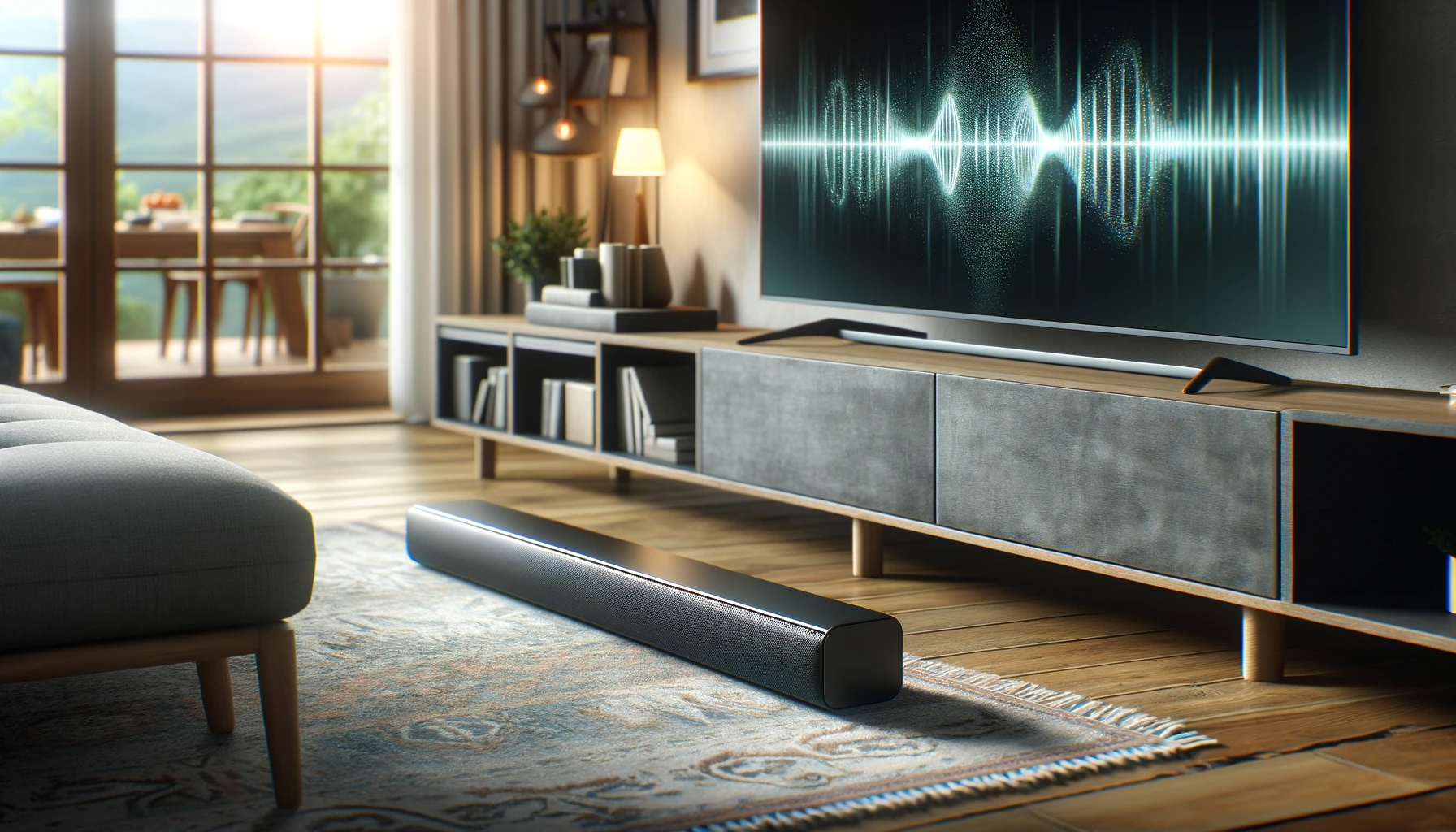Have you ever struggled to hear dialogue on your TV, even with the volume turned up high?
This is a common problem for many people with hearing impairments, but there may be a solution: soundbars.
Soundbars are designed to enhance audio clarity and speech intelligibility, making them a potential game-changer for those with hearing loss.
In this article, we’ll dive into the world of soundbars and explore how they can help improve the listening experience for people with hearing impairments.
We’ll examine the features that make soundbars beneficial, compare them to traditional TV speakers, and discuss how to set them up for optimal results.
Let’s get started!
Can A Soundbar Help Someone with Hearing Issues?
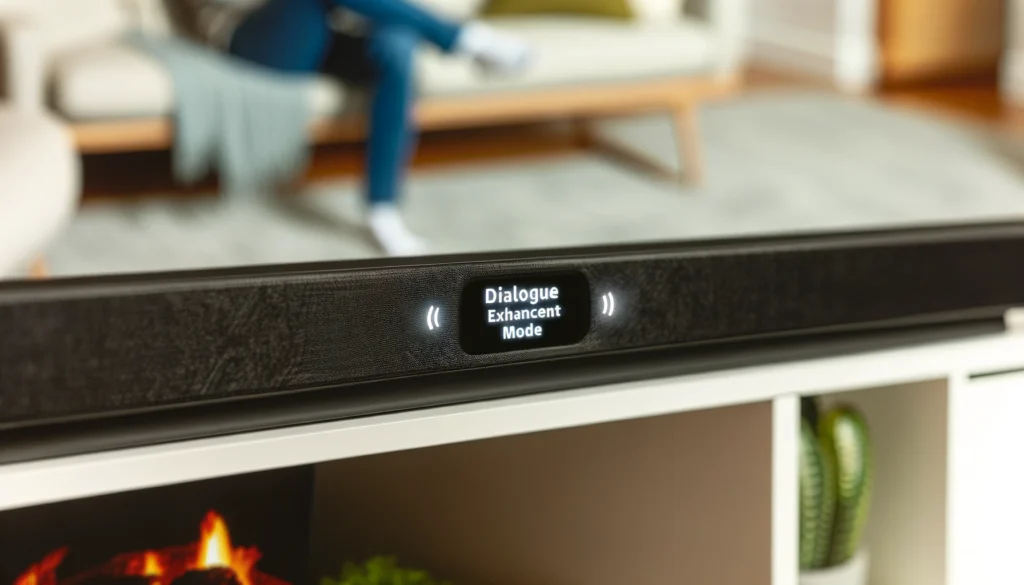
Yes, soundbars can indeed help people with hearing impairments enjoy clearer and more intelligible audio from their TVs.
Soundbars are designed to enhance speech frequencies and provide features like dialogue enhancement modes, which can make it easier to understand what’s being said on-screen.
By delivering higher-quality sound than built-in TV speakers, soundbars can significantly improve the listening experience for those with hearing loss.
In the following sections, we’ll explore the various ways in which soundbars can benefit the hearing impaired and discuss how to set them up for the best results.
How Soundbars Enhance Audio Clarity
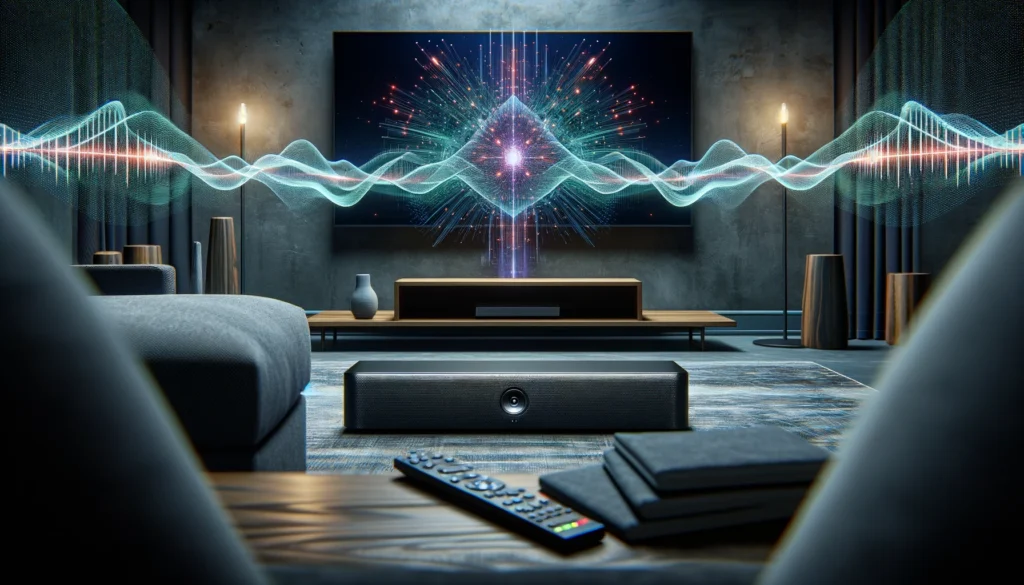
Soundbars are designed to improve the overall audio experience by utilizing multiple speakers to create a wider soundstage.
This wider soundstage allows for a more immersive and engaging listening experience, as the sound seems to emanate from a larger area rather than being confined to a single point.
By spreading the sound across a broader horizontal plane, soundbars can create a more natural and lifelike audio presentation that draws the listener into the content.
Soundbars also employ advanced audio processing techniques to improve speech intelligibility.
These techniques, such as digital signal processing (DSP) and dynamic range compression (DRC), help to clarify dialogue and make it easier to understand, even in scenes with background noise or music.
DSP algorithms can analyze the incoming audio signal and make real-time adjustments to enhance speech frequencies while suppressing competing sounds.
DRC, on the other hand, works by narrowing the gap between the loudest and quietest parts of the audio, making it easier to hear dialogue without the need to constantly adjust the volume.
Additionally, soundbars typically feature higher-quality speakers compared to built-in TV speakers.
These superior speakers deliver clearer and more detailed sound, allowing the listener to pick up on subtle nuances in the audio that might otherwise be lost.
Soundbars often use multiple drivers, each optimized for a specific frequency range, to ensure that every aspect of the audio, from deep bass to crisp treble, is reproduced accurately and with minimal distortion.
Soundbar Features Beneficial For The Hearing Impaired
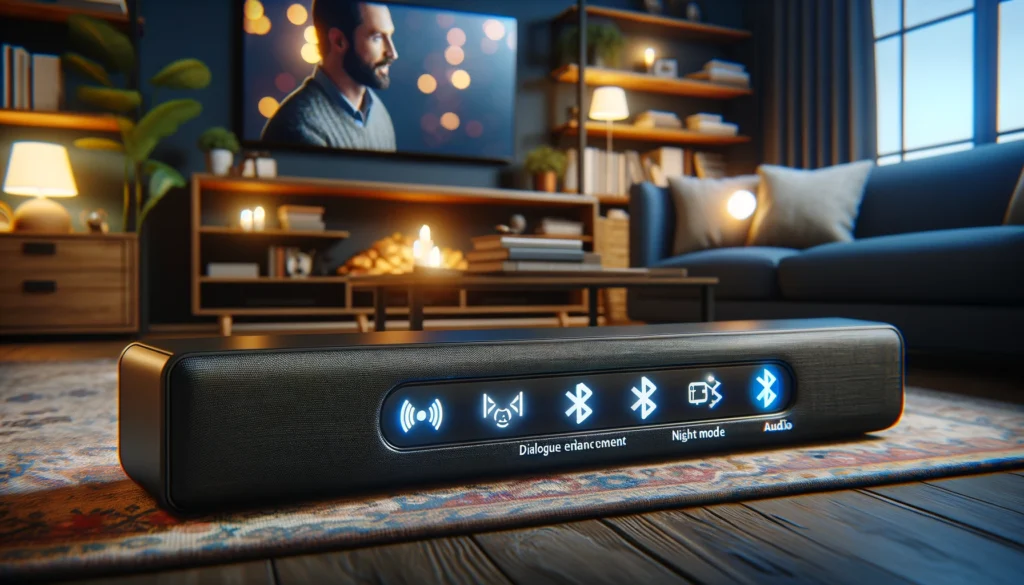
Many soundbars come equipped with dialogue enhancement modes specifically designed to emphasize speech frequencies.
These modes work by boosting the volume of frequencies typically associated with human speech while slightly reducing the volume of other frequencies.
By bringing the dialogue to the forefront of the audio mix, these modes make it easier for those with hearing impairments to follow along with the content without straining to discern what is being said.
Night modes, another common feature found in soundbars, compress the dynamic range of the audio, making it easier to listen at lower volumes without missing out on quieter sounds.
This is particularly beneficial for those with hearing impairments who may struggle to hear dialogue when there are loud background noises or sound effects.
By narrowing the gap between the loudest and softest sounds, night modes ensure that dialogue remains audible even when the overall volume is reduced, making it easier to watch content without disturbing others or straining to hear the speech.
Some soundbars also offer Bluetooth connectivity, allowing users to stream audio directly from their hearing aids.
This direct connection eliminates the need for the sound to travel through the air, which can lead to a loss of clarity and volume.
By streaming audio directly from the soundbar to the hearing aids, users can enjoy a clearer, more direct sound that is tailored to their specific hearing needs.
This feature is especially useful for those who rely on hearing aids to compensate for more severe hearing loss, as it ensures that the audio is delivered with minimal interference or degradation.
Comparing Soundbars To Traditional TV Speakers
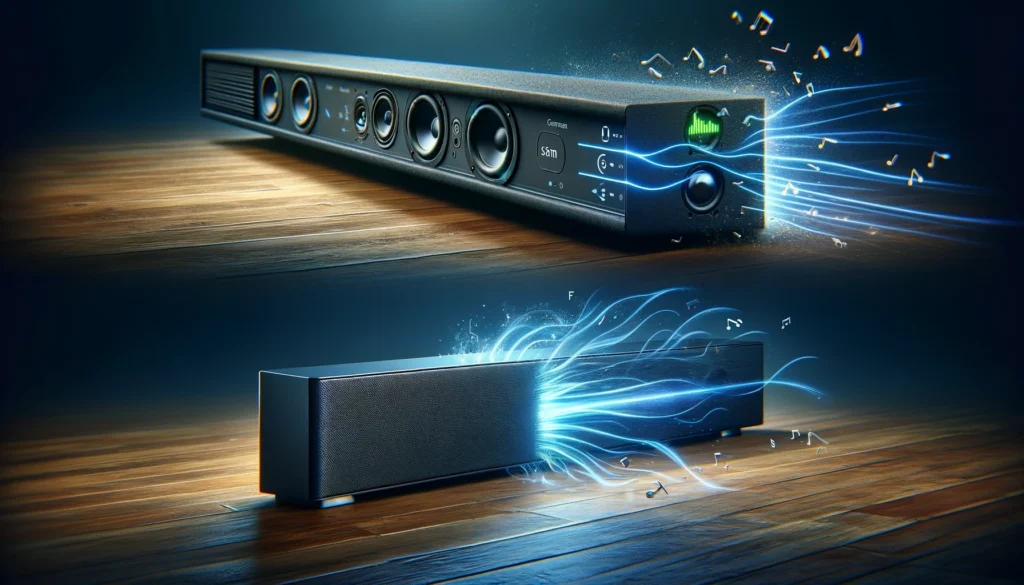
Built-in TV speakers often lack the clarity and volume necessary for an enjoyable listening experience.
They are typically small and underpowered, resulting in thin, tinny sound that can be difficult to understand, especially for those with hearing impairments.
The limited size and placement of built-in speakers also mean that they struggle to create a wide, immersive soundstage, leading to a flat and lifeless audio presentation.
Soundbars offer a significant upgrade in audio quality compared to built-in TV speakers.
With larger, more powerful speakers and advanced audio processing capabilities, soundbars can deliver a much clearer and more robust sound.
The increased power and size of soundbar speakers allow them to reproduce a wider frequency range with greater accuracy and impact, bringing out details in the audio that built-in speakers often struggle to convey.
Many soundbars also feature dedicated center channels, which are designed to improve dialogue clarity.
These center channels are positioned directly in front of the listener and are optimized to reproduce speech frequencies, making it easier to understand dialogue even in complex audio mixes.
By separating the dialogue from the rest of the audio and directing it towards the listener, center channels help to ensure that speech remains clear and intelligible, even in scenes with lots of background noise or competing sounds.
Soundbar Placement And Setup For Optimal Results
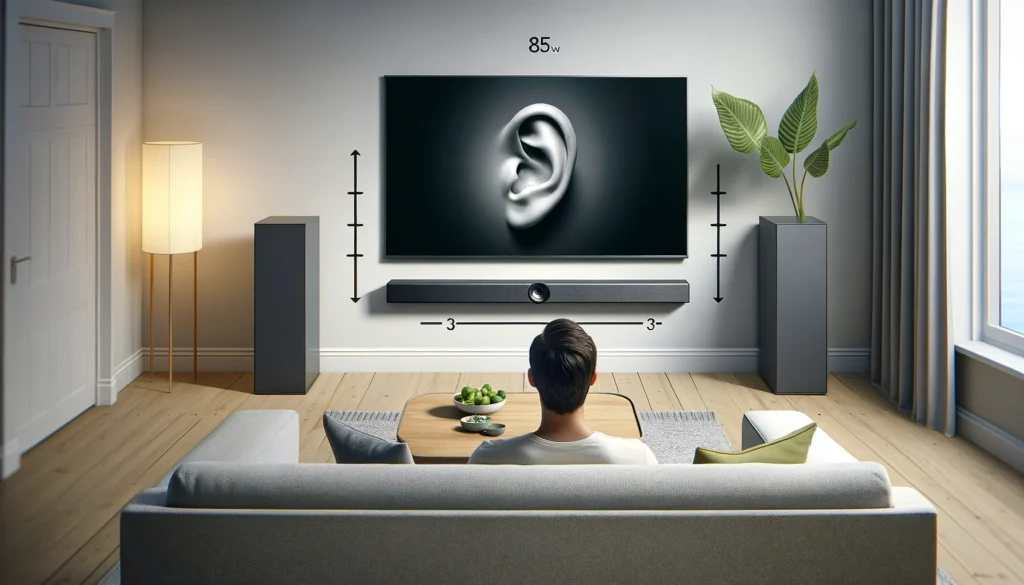
To get the most out of a soundbar, it’s important to position it correctly.
Ideally, the soundbar should be placed at ear level, either directly below or above the TV.
This placement ensures that the sound is directed towards the listener’s ears, minimizing the impact of room acoustics and improving overall clarity.
If the soundbar is placed too high or too low, the sound may be reflected off of surfaces in the room, leading to a muddied or distorted audio presentation.
In addition to proper placement, adjusting the soundbar’s settings to prioritize speech frequencies can further enhance dialogue clarity.
Many soundbars offer EQ settings that allow users to boost or cut specific frequency ranges to suit their preferences and hearing needs.
By emphasizing frequencies in the range of human speech and slightly reducing the volume of competing frequencies, users can create a custom audio profile that makes dialogue easier to understand without sacrificing overall sound quality.
Calibrating the soundbar to the room acoustics can also improve overall performance.
Some high-end soundbars come with built-in room calibration microphones that measure the acoustic properties of the room and automatically adjust the soundbar’s settings for optimal sound.
This process involves playing a series of test tones and measuring how they interact with the room’s surfaces, allowing the soundbar to compensate for any imperfections or anomalies in the listening environment.
By tailoring the sound to the specific characteristics of the room, room calibration helps to ensure that the audio is as clear and accurate as possible.
Limitations Of Soundbars For The Hearing Impaired
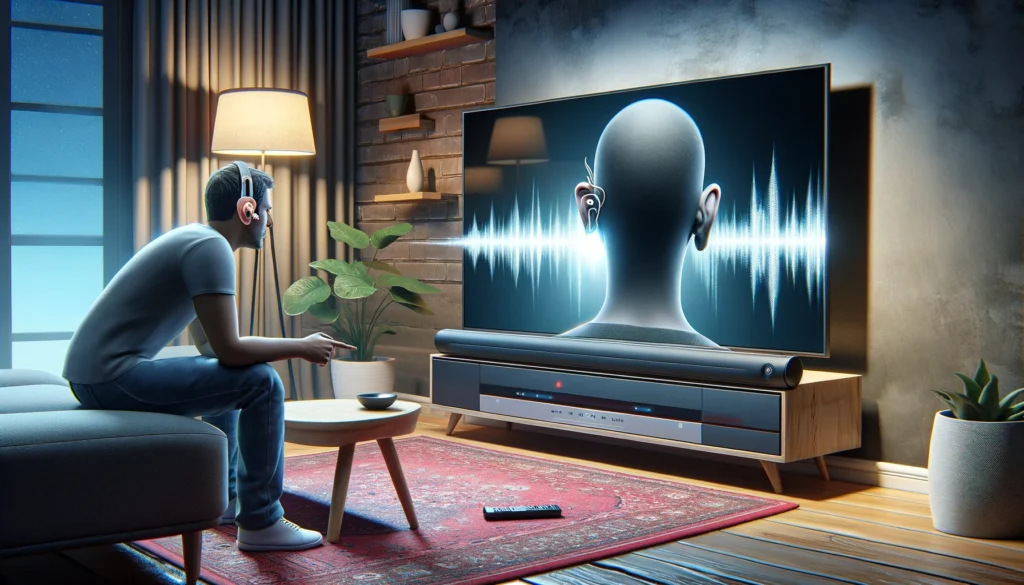
While soundbars can significantly improve audio clarity and speech intelligibility, they may not be as effective for those with severe hearing loss.
In some cases, even with advanced features like dialogue enhancement and night modes, the volume and clarity may still not be sufficient.
This is because severe hearing loss often involves damage to the inner ear or auditory nerve, which can make it difficult to perceive certain frequencies or understand speech even when it is amplified.
It’s also important to note that not all soundbars are created equal.
Some models may lack advanced features like dialogue enhancement or room calibration, which can limit their effectiveness for those with hearing impairments.
When shopping for a soundbar, it’s important to look for models that offer a range of accessibility features and to read reviews from other users with similar hearing needs to ensure that the device will meet your specific requirements.
Room acoustics and soundbar placement can still affect audio clarity, even with a high-quality soundbar.
Rooms with many hard surfaces or irregular shapes can create reflections and echoes that interfere with dialogue intelligibility.
In these cases, it may be necessary to use additional acoustic treatments, such as sound-absorbing panels or curtains, to minimize unwanted reflections and improve overall sound quality.
Experimenting with different soundbar placements and angles can also help to find the optimal listening position for your specific room and hearing needs.
Combining Soundbars With Other Assistive Technologies
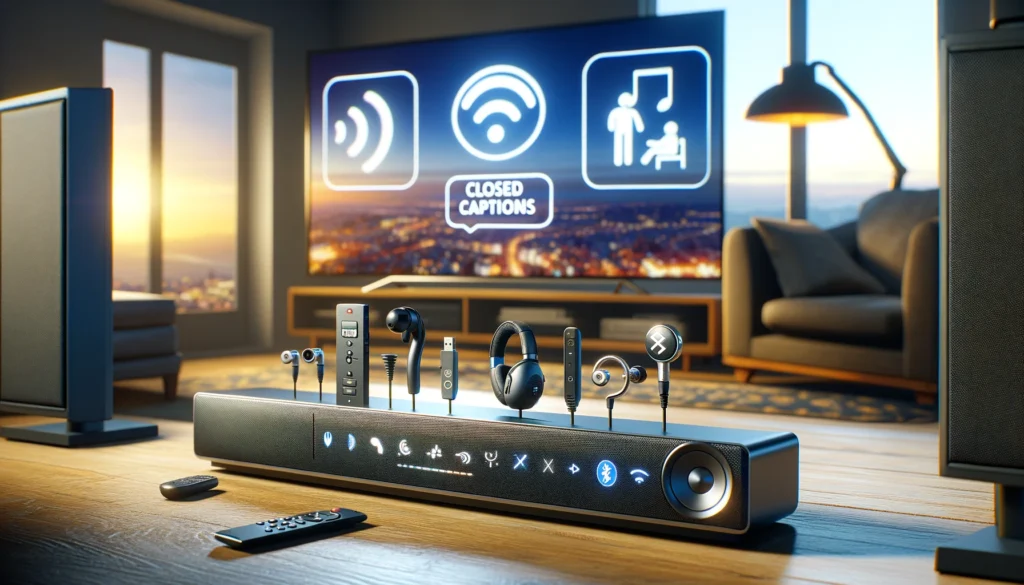
To further enhance the listening experience, soundbars can be combined with other assistive technologies.
One popular option is to use closed captions in conjunction with a soundbar.
Closed captions provide a visual representation of the audio, including dialogue, sound effects, and musical cues, making it easier to follow along with the content even if some of the audio is missed or misunderstood.
By using closed captions together with a soundbar, users can enjoy a more complete and accessible viewing experience that engages both their visual and auditory senses.
Hearing aids can also be paired with soundbars via Bluetooth, allowing users to stream audio directly to their hearing aids for improved clarity and volume.
This can be especially beneficial for those with more severe hearing loss who may struggle to hear the soundbar’s audio through the air.
By streaming the audio directly to the hearing aids, users can take advantage of the hearing aids’ customized amplification and noise reduction features, ensuring that the sound is optimized for their specific hearing profile.
This direct connection also eliminates any potential interference or loss of quality that can occur when the sound travels through the air.
Loop systems, which use an electromagnetic field to transmit audio signals directly to hearing aids or cochlear implants, can also be integrated with soundbars.
By connecting the soundbar’s audio output to a loop amplifier, users can receive the audio signal directly in their hearing aids, bypassing the room acoustics and improving overall performance.
This setup is particularly useful in larger rooms or public spaces, where the distance between the soundbar and the listener can lead to a loss of audio quality.
With a loop system, users can enjoy clear, direct sound no matter where they are seated in relation to the soundbar.
Soundbars can be a valuable tool for improving audio clarity and speech intelligibility for those with hearing impairments.
By offering advanced features like dialogue enhancement, night modes, and Bluetooth connectivity, soundbars can help to create a more accessible and enjoyable listening experience.
However, it’s important to consider factors such as room acoustics, soundbar placement, and the severity of the hearing loss when selecting and setting up a soundbar.
For best results, users may also want to combine their soundbar with other assistive technologies, such as closed captions, hearing aid streaming, or loop systems, to create a comprehensive and personalized listening solution.
Conclusion
In summary, soundbars can be a valuable tool for improving audio clarity and speech intelligibility for those with hearing impairments.
By offering features like dialogue enhancement, night modes, and Bluetooth connectivity, soundbars can create a more accessible and enjoyable listening experience.
However, the effectiveness of a soundbar depends on factors such as room acoustics, placement, and the severity of the hearing loss.
Combining soundbars with other assistive technologies, such as closed captions, hearing aid streaming, or loop systems, can further enhance the listening experience.
Ultimately, while soundbars can be beneficial for many people with hearing impairments, it’s important to consider individual needs and preferences when selecting and setting up a soundbar system.
